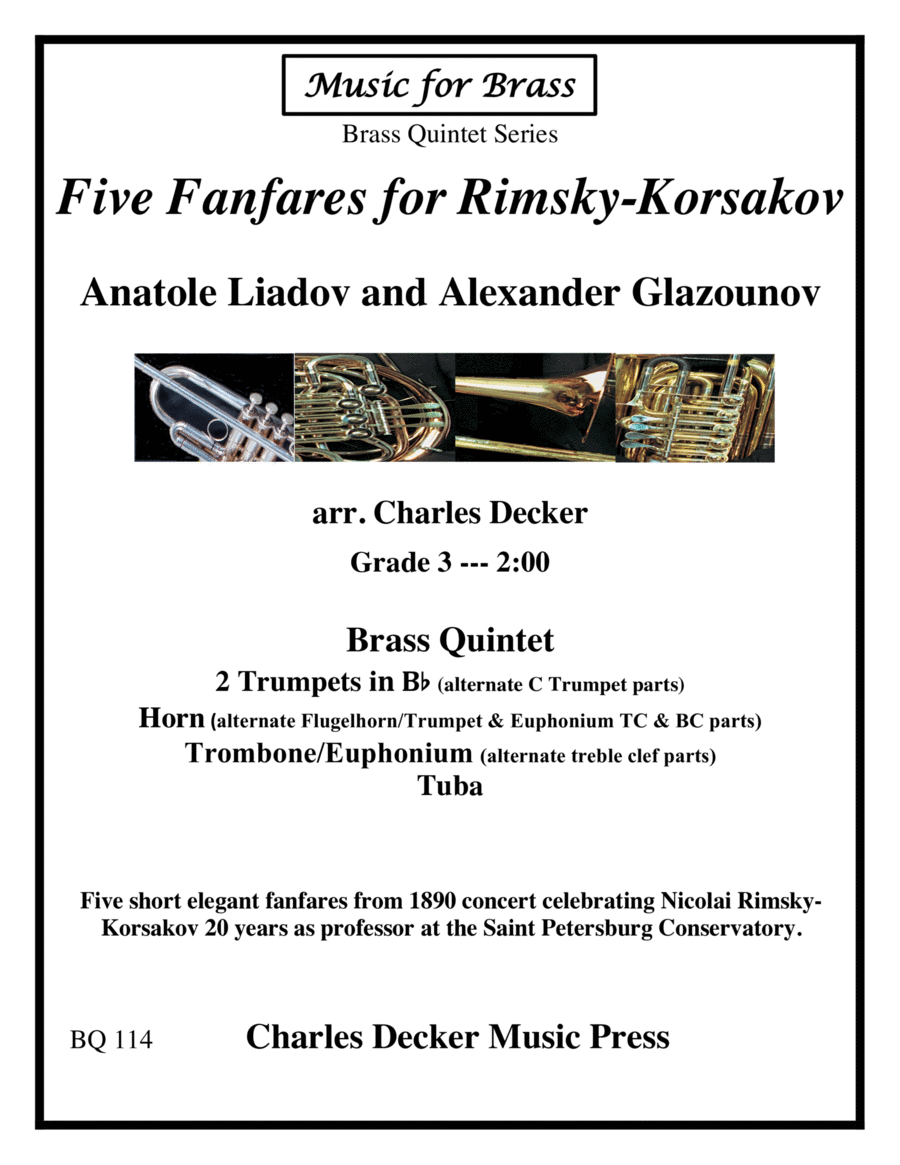Brass Quintet Baritone Horn TC,Euphonium,Trombone,Trumpet,Tuba - Level 3 - Digital Download SKU: A0.817101 Composed by Anatole Liadov and Alexander Glazounov. Arranged by Charles Decker. 19th Century,Contest,Festival,Multicultural,Romantic Period,World. 22 pages. Charles Decker Music Press #3530649. Published by Charles Decker Music Press (A0.817101). These five short, elegant fanfares by former students of Nicolai Rimsky-Korsakov were composed for the 1890 concert celebrating his 20 years as professor at the St. Petersburg Conservatory in Russia. Originally scored for an orchestral brass section, the fanfares retain their brilliance as a brass quintet and parts can be doubled to intensify the musical impact. Arranged for a brass quintet of two B-flat trumpets with alternate C trumpet parts, horn in F with alternate substitute parts for horn (B-flat trumpet, treble and bass clef baritone), trombone with a substitute treble clef baritone for trombone part and tuba. This is a very accessible work for student ensembles and less experienced players that will impress audiences and add festive excitement to concerts or ceremonies. The recording is an actual brass quintet performance and not computer playback.See more than 70 mixed brass ensemble publications at Charles Decker Music Press at Sheet Music Plus for inexperienced to advanced musicians with music ranging from the Renaissance to contemporary new works for trios, quartets, quintets, brass choir and brass band. Many of the mixed brass ensemble editions include alternate and substitute parts being alternate C trumpet parts for B-flat trumpet parts, flugelhorn/trumpet substitute for horn, horn substitute for trombone and treble clef euphonium substitute for trombone. See also 50+ homogeneous brass group editions with Charles Decker Music Press at Sheet Music Plus for horn, trumpet and trombone ensembles. Check out the Music of Black Composers Series with Charles Decker Music Press at Sheet Music Plus with 25 arrangements for mixed brass ensembles ranging from early jazz to symphonic works with composers Samuel Coleridge-Taylor, R. Nathaniel Dett, William Grant Still, Will Marion Cook, James Reese Europe, James Johnson and others. All ensemble publications include recordings of the entire edition.  For more of my brass quintet editions use these links to Kendor Music and Cherry Classics Music to see listings of arrangements of music by J.S. Bach, H.L. Clarke, Debussy, Dukas, Elgar, Falla, Holst, Ives, Nestico, Rachmaninoff, Satie, and Tchaikovsky.
